These days, when students and visitors pull up to a parking meter on a campus, they expect multiple payment options, whether they stay five minutes or five hours. What they don’t expect is to hunt for change by digging in the seats of their cars, says Casey Jones, spokesperson and past board chair for the International Parking Institute (IPI), Alexandria, Va.
“Consumers today want mobile applications and solutions,” he says. “They want convenience. They want options with real-time information. We’re seeing a huge advancement and explosion of applications, whether students want to find parking, make a reservation, and start or conclude a parking session. All of those are available through mobile applications that allow us to offer a level of convenience, reliability, and security that we haven’t had in our industry’s history.”
According to IPI’s 2015 Emerging Trends in Parking survey, technology continues to reshape and revolutionize an industry previously best known for issuing tickets and demanding that drivers “stay between the lines.” In “Top 10 Emerging Trends in Parking,” on page 20, the survey notes that a “move toward innovative technologies to improve access control and payment automation” and the “prevalence of mobile applications” are the top two industry trends identified by parking professionals.
Another trend noticed by Jones is a decrease in what has been the typical model for parking on campus: the annual permit. “We’ve come to realize that people don’t need to drive every day, and they don’t want to drive every day. We’re moving away from the all-you-can-eat permitting to something that is much more aligned with how people are actually commuting to campus.”
This variation in transportation offers numerous benefits, he says. “Spaces on campus can be used much more efficiently, consumers don’t have to pay for a year’s worth of parking when they don’t need it, and goals in sustainability and alternative transportation can be addressed.”
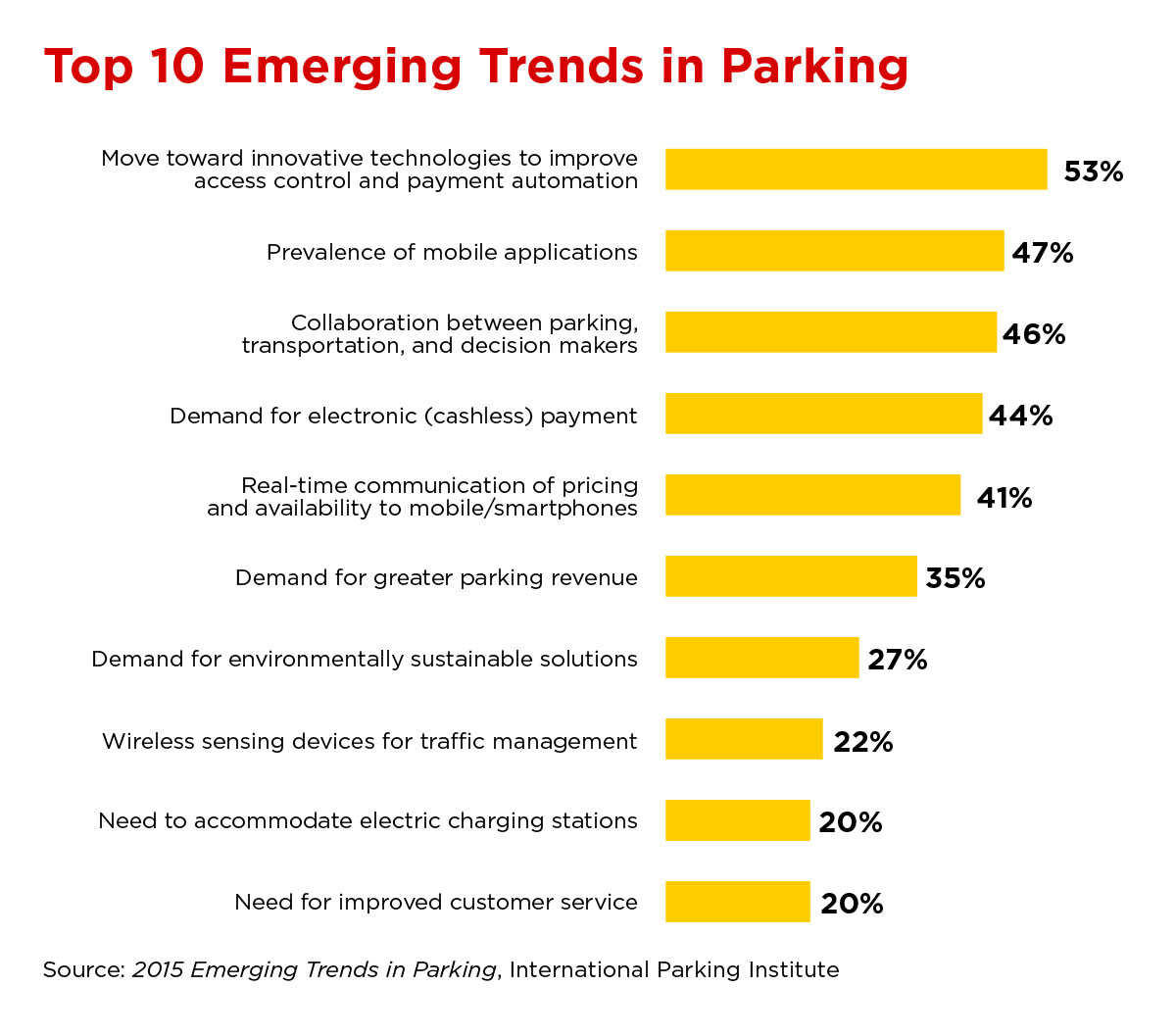
To tap into the technological trends occurring on campus parking lots, Business Officer recently interviewed representatives of four types of institutions.
Understanding Visitor Demand
Athletic, arts, and cultural events attract well over one million visitors a year to the University of California (UC), Irvine, says Ron Fleming, director of transportation and distribution services. “We don’t just have faculty, staff, and students,” he says. “We also have visitors, who create a demand that needs to be managed.”
To that end, the institution several years ago implemented a guest reservation system that puts control of parking into the hands of departments for their guests and events. “They can register users coming in for a whole year or every Tuesday, Wednesday, Thursday; and we’ll recoup the cost once these people come to our information booth, pick up their permit, and park.”
A major advantage of the system, Fleming says, is the ability to understand visitor demand. “Through this technology, not only can we serve the customer and make it seamless for the visitor, but we also use the data for planning. We know where there is growth, where there are spikes, and where there is fluctuating demand that we need to address. When the campus planners come in and say, ‘We’re adding this type of building. What would that mean for our visitor environment?’ I usually can use data from a similar type of building and extrapolate potential future visitor demand.”
Because all visitors need a permit, UC has another option as well: People who are attending an athletic or cultural event can go to the university website and pre-purchase parking. “They can put in their license plate number and buy the permit,” he says. “They don’t need a paper parking pass. They just come in and park. Our enforcement staff drives around with license plate readers. If the people who park are on the list, they’re fine.”
For visitors, the normal daily event rate for parking is $10. “We’ve had that rate for about eight years, which is pretty reasonable for our area. We try to keep it affordable. We don’t want to price it so high that people question whether the event is worth coming to.”
UC also relies on license plate recognition for residential and employee parking, although Fleming points out that the vast majority of faculty either walk or bike to work because “they have the luxury of pretty much living on campus in really nice local housing.”
The technology that operates the various parking systems was developed in-house by university IT teams. “We don’t normally look for vendor-supplied solutions,” says Fleming, who has a full-time parking staff of 40-plus. “We might look for vendor tools, like the license plate readers. We buy the cameras but not necessarily the software.”
Because all visitors need a permit, UC has another option as well: People who are attending an athletic or cultural event can go to the university website and pre-purchase parking. “They can put in their license plate number and buy the permit,” he says. “They don’t need a paper parking pass. They just come in and park. Our enforcement staff drives around with license plate readers. If the people who park are on the list, they’re fine.”
For visitors, the normal daily event rate for parking is $10. “We’ve had that rate for about eight years, which is pretty reasonable for our area. We try to keep it affordable. We don’t want to price it so high that people question whether the event is worth coming to.”
UC also relies on license plate recognition for residential and employee parking, although Fleming points out that the vast majority of faculty either walk or bike to work because “they have the luxury of pretty much living on campus in really nice local housing.”
The technology that operates the various parking systems was developed in-house by university IT teams. “We don’t normally look for vendor-supplied solutions,” says Fleming, who has a full-time parking staff of 40-plus. “We might look for vendor tools, like the license plate readers. We buy the cameras but not necessarily the software.”
Because some of the existing surface parking is being taken over by new buildings, UC is looking at constructing another structure, which Fleming hopes will go online by 2020. “We have about $12 million in reserves right now for parking. We’re not state funded so our users have to pay for lighting, asphalt work, the debt to construct the facilities, and operations. Our debt per year is about $5.8 million. We have about $60 million in debt for structures from bond-financed loans that the campus system groups together with other infrastructure improvements to sell the bonds.”
He points out that construction costs average $25,000 to $35,000 per stall for parking within a structure above ground, and below-ground cost can accelerate to $55,000 per stall, depending on site issues. “Surface parking can be $7,500 to $9,500 per stall, if you’re not counting the cost of the land,” he says, “but ownership of real estate can be an issue.”
Commuters Seek Flexibility
Parking transactions with mobile payments, which started in the fall of 2015 at Northern Virginia Community College (NOVA), are easily topping 6,000 a semester, says Mike Blackwell, director of parking and transportation.
“Students are now being provided with many flexible options to fit their needs,” he says. “Operations were at one point a manual process, from permitting, paying, and tracking. Now, with the seamless technology from online services, we are able to provide more efficient options to our students. At the same time, we are able to track all the data, which allows us to continue in the right direction with our parking solutions.”
Since all NOVA students are commuters but many are not full time, some of them find it convenient and economical to purchase hourly bundles of parking through the Passport Parking app. “They’ve done the math. The number of hours they will be on campus throughout the semester doesn’t require a permit,” Blackwell explains.
They can choose 60 hours for $70 (a $120 value) or 30 hours for $40 (a $60 value). After creating a Passport account, students can then park by the hour at a reduced rate in any B lot or metered space. The college pays the vendor 25 cents per transaction.
“Our third-party app allows students to go online, put in their license plate numbers, and pay like they would on a meter,” Blackwell says. “This allows us to utilize more parking because hourly parkers are not restricted to just the number of meters we have. It also allows students to add time if they get stuck in class or they need to go to the library. They don’t need to worry about coming back out to the parking lot to put time on their meters.”
NOVA uses another company, T2 Systems, for the rest of its parking operations, including the permit system, enforcement, online sales, citations, appeals, and financial reconciliation. Parking, considered to be an auxiliary service, contributes revenues to locally funded programs, shuttle and other transportation services, facility maintenance, institutional support, and capital reserves.
After a study of the Annandale campus, NOVA last fall implemented free parking after 4 p.m. to encourage students to take night classes. “We were getting close to capacity during the day,” Blackwell explains, “and we had issues with students parking on streets. We wanted to encourage students to take more night classes, which would help with the academics by spreading out the enrollment.”
Blackwell estimates that NOVA has 8.2 students for every parking space. Annandale, the largest campus, has 4,000 spaces, of which 360 are hourly spaces in a garage.
The number of permits sold varies by semester. Fall is the busiest with 13,000, spring averages 11,500, and summer drops to 6,000. “That doesn’t mean we’re at half capacity,” he says. “We have found that, especially this summer, we just have more hourly parkers or parkers using flexible options. We’ve seen a boost in those sales.”
Data Drive Decisions
When he arrived at Clemson University, Clemson, S.C., five years ago, Dan Hofmann found that the institution was not using any parking technology. As a result, his biggest challenge was determining the answer to two questions posed by students, employees, and visitors alike: “When is the bus coming?” and “Where can I find a parking space?”
He is now able to answer both questions through the use of the my.Clemson phone app, which allows users to track daytime bus routes on campus, along with estimated arrival times. “We use a product called RideCell for the bus routes that the university runs,” says Hofmann, director of parking and transportation services. It uses information from Clemson’s Tiger Transit bus fleet and the city of Clemson’s TransLoc. “Both systems have been integrated into our university-owned app.”
Users can also find out the current availability of space in surface parking lots designated as accessible, apartment, carpool, commuter, electric vehicle charging, employee, motorcycle, permit, visitor meter parking, and more.
Once they decide which lot to choose, users can—with a quick click— turn their phones into a GPS and get voice-guided directions.
“By listening to and working with students, faculty, and staff, we’ve gone to real-time availability of parking at 10 parking lots with more than 4,200 spaces,” says Hofmann. The campus receives information regarding real-time availability of parking spaces from two companies, Streetline and T2 Systems.
Hofmann first installed radio-frequency identification (RFID) sensor technology three years ago in almost 400 metered spaces so that visitors could find their way around campus. The sensors communicate data to gateways and repeaters around campus. The information then goes up into the cloud, is pulled back through Streetline’s app, and then pushed through the my.Clemson app.
Next, Hofmann looked at ways to pick up real-time availability for students, selecting T2 Systems’ AutoCount, which relies on loops running across the entrances and exits to count cars in and out of lots. He estimates that the two cloud-based systems, along with 27 multispace meters, cost about $500,000 annually.
Hofmann emphasizes that every parking decision is based on facts and figures, leaving nothing to guesswork. “We’re using data for every decision that we make. For example, we used data to bring our transit fees into line. We have GPS technology on buses, and we take ridership information by time of day to determine appropriate levels of service. At certain times, we were paying the city to run too many buses. We’ve scaled back to free up money to provide additional services to our students.”
Those extra services include student shuttles to and from the airport, as well as Tiger Transit, a safe-ride program for students that operates from 6 p.m. to 6 a.m.
A Temporary Permit, Please
The recent launch of a module that allows faculty, staff, and students, as well as visitors, vendors, and construction workers, to request temporary permits online has been a hit with users, reports Francie Ray, parking supervisor, Murray State University, Murray, Ky.
“Our customers love the ability to request a permit at their convenience 24/7, allowing our customers the flexibility to meet their own schedule,” she says. “In the past, they would have to allow time to complete a handwritten application upon arrival to campus. Now, they only need enough time to walk into our office with a picture ID to pick up the permit that has already been printed and is ready for their arrival.”
Users can access the app, which was introduced in January 2016, through a direct URL from any computer, tablet, or smart phone. Departments and students can submit requests on their guests’ behalf, which means that the permit is ready and waiting at the public safety office for their guests.
“Our faculty, staff, and students have a direct link on the parking channel via our myGate system,” Ray says. “This service provides our parking customers the capability of requesting a temporary parking permit 24/7. Both our parking office and 911 dispatch center process the temporary permits, which may be picked up at either our office during regular business hours or at our 911 dispatch center before or after hours and on weekends.”
The temporary permit module supplements the BOSSCARS parking management system implemented in 2011 to reduce data entry errors, and streamline permit and citation processes. “Any citation written on a registered vehicle in our system is automatically downloaded to the proper individual’s account,” Ray says. “This system generates an automated e-mail to the individuals receiving parking citations each day.”
Jacklyn Dudley, vice president of finance and administrative services, says that the initial investment in the parking management system was about $122,000, with an annual average maintenance cost of $15,800 over the past five years. New hand-held scanners for parking enforcement employees cost $23,000.
“The parking management system has saved the university more than $5,000 in overtime costs per year,” Dudley says. “Other savings have been accrued in the timely entry and assessment of charges to faculty, staff, and student accounts. In addition, the parking management system and internal parking procedures ensure a more accurate and timely reconciliation of accounts.”
MARGO VANOVER PORTER, Locust Grove, Va., covers higher education business issues for Business Officer




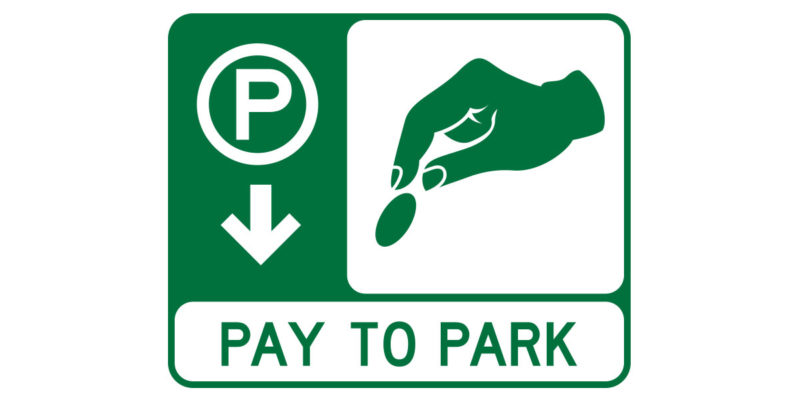 Students: 30,000
Students: 30,000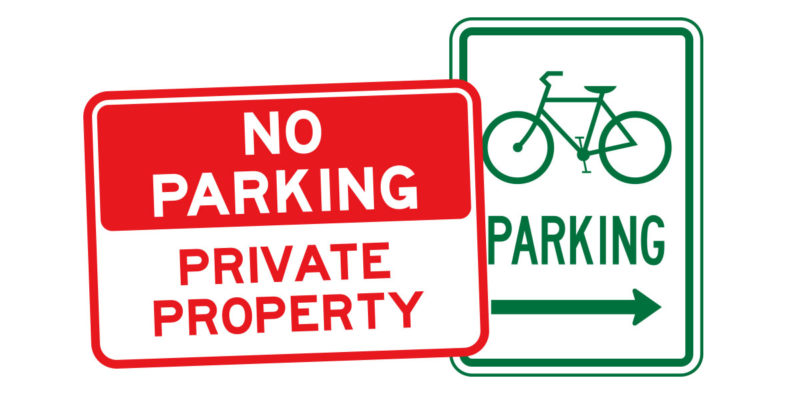 Campuses: 6
Campuses: 6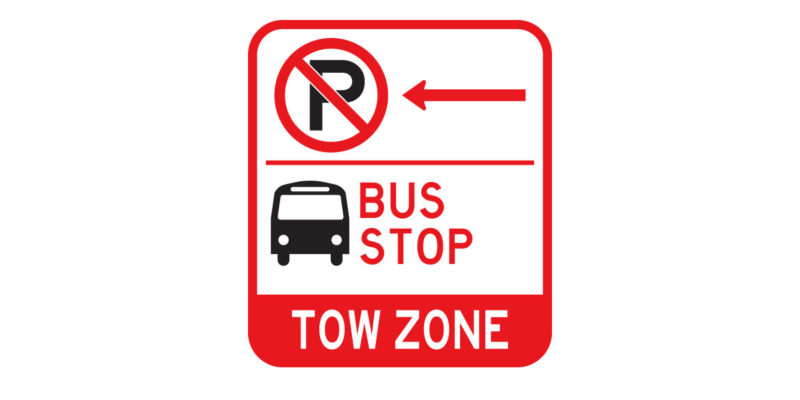 Students: 22,700
Students: 22,700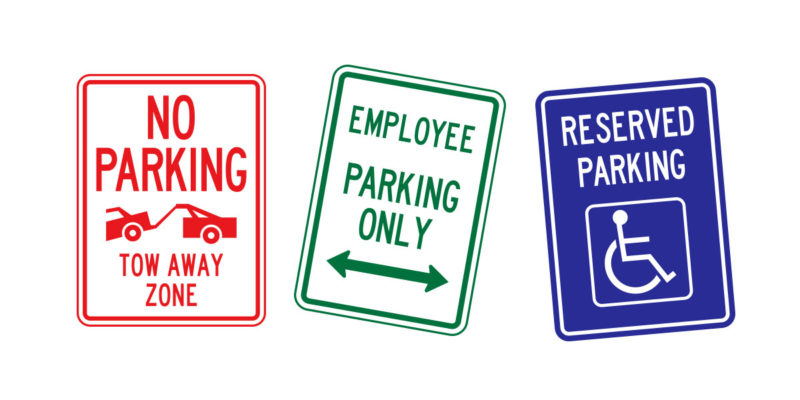 Faculty: 640
Faculty: 640